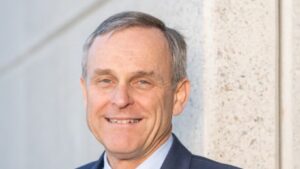How ISF is responding to the changing business environment.
As the voice of the global seed industry since 1924, the International Seed Federation (ISF) has embarked on an ambitious project for the second time to define its key strategic objectives. With the last round of objectives coming to a close this year, a new set is being developed thanks to the tireless work of global members. In this year of transition, ISF is reviewing its objectives from 2016 to 2020 and previewing the key issues for 2021 to 2025.
“For an international association like ISF that brings together the huge diversity of the global seed sector, with over 8,000 members involved in breeding, production, trading or in all three operations at the same time, it is vital to have a joint vision on what we are working towards, what are our ultimate goals,” says Michael Keller, secretary general of ISF.
Keller says working to clearly define their vision of making quality seed accessible to all and to support food security and sustainable agriculture was an important stepping stone.
“It helped us to express, concretely, our mission, which is to create the best environment for the global movement of seed and promote plant breeding and innovation,” he says. “This is the foundation and the ‘raison d’être’ of our actions.”
The pillars of the key strategic objectives, according to Keller, are the use of and access to genetic resources, continued capacity for plant breeding innovation to address the many challenges the world is facing today, the importance of efficient and harmonized international seed movement to provide access and seed choice for farmers and the role of intellectual property rights to sustain the delivery of innovation.
Over 200 seed professionals are active on ISF committees, sections and working groups, sometimes finding common ground a difficult assignment. But Keller says a lot of progress was made during the last few years on several topics.
“Although in multilateral bodies like the International Plant Protection Convention (IPPC) where there is a vast and diverse representation of parties, consensus is not always an easy task,” he adds.
Keller is exceedingly happy with the tremendous progress made on plant breeding innovation during the recent years, where ISF and its members engaged at all levels and participated in discussions for a consistent and aligned approach on science and risk-based regulations for the latest breeding methods between the countries.
“It was very good to see that around the world the discussions progressed in this direction,” he says. “Consistency is essential for our members and we will continue our efforts to secure our capacity for innovation.”
Another win was the adoption of the International Standards on Phytosanitary Measures (ISPM 38) by the IPPC where individuals from across the seed industry partnered with ISF to contribute to the IPPC in the development of a seed specific international standard.
“Seed is moving more and more around the world and each time a seed lot passes a border, a certificate is needed; therefore, harmonization is critical for our sector,” Keller says. “While it’s important to take a moment to celebrate this achievement, we also recognize the need to focus on more effective implementation that will be key to experiencing the practical benefits and improved international movement of seed.”
He adds that the work completed on the key strategic objectives over the last five years was largely due to everyone pulling together. The efforts resulted in more efficient and direct support to members, including a training manual on the ISPM 38 as well as building training modules to increase the understanding of the new measures.
Keller states ISF’s communications are changing a little as well.
“We want to deliver a compelling message that focuses on our sector’s contribution to society,” he says. “I am very happy to see our growing presence in social media. The times are changing, the sector is changing and we as associations have to change, adapt ourselves and also guide our members. Strong and proactive engagement and communication is fundamental to succeeding in our strategic objectives.”
The Next Five Years
Because of COVID-19 and the postponement of the Word Seed Congress (WSC) in Cape Town where the plan would have been presented, the new key strategic objectives for ISF won’t be formally adopted until later this year. But Marco van Leeuwen, second vice president of ISF and managing director of Rijk Zwaan, says the process has been a smooth one.
“We started the process to review the current key strategic objectives during the ISF midterm meetings in October 2019,” van Leeuwen says. “The board assigned this task to a working group composed of representatives of national seed associations (NSAs), seed companies and the executive committee, covering all geographical regions and crop sections. A large part of the process was guided by consultants from Alcimed, a French based strategy consultancy group.”
Van Leeuwen says the effort started by reaching out to members with an online survey to gauge their opinions concerning the organization, the current set of key strategic objectives and what they saw as challenges and priorities over the next five years.
“These interviews gave valuable input for a new draft strategic plan, composed of five key strategic objectives,” van Leeuwen says.
A series of workshop to fine-tune the document followed. In the coming weeks, the latest version will be shared with the working group and board of directors for a last review.
“This September, we expect to send the final version to the board for adoption during the midterm meetings in October and hope to present the new plans to ISF’s membership at the 2021 WSC in Barcelona.”
While formulating the new set of key strategic objectives for 2021 to 2025, van Leeuwen points out that the objectives currently in place are still extremely valid.
“Innovation, movement of seed, intellectual property rights and biodiversity will also be of crucial importance in the next decades,” he says.
All of the objectives — current and proposed — fall into line with ISF’s mission statement.
“The vision and mission statement are very well formulated and meant to last for a longer time. Consistency and long term orientation in the seed world is key and hence ISF’s approach needs to be in line with this,” he adds.
Perhaps at this time more than any other, the new objectives play a critical role in responding to the rapidly changing seed industry.
“Seed is the starting point of the food system, and today the international policy making community is realizing that transforming our food systems into a sustainable one requires an integrated approach that takes into consideration not just food security but also other dimensions like climate change, health and nutrition, and creating sustainable livelihood in developing countries and rural communities,” van Leeuwen explains.
Based on the input from the online survey, interviews with external stakeholders and discussions with NSAs, two important dimensions were added to the current approach: sustainability and engagement.
“As a consequence, the new key strategic objectives will connect our work even more to climate change, the UN Sustainable Development Goals, diversification of membership, especially in developing countries, and helping foster relationships with a broader range of external stakeholders including the value chain,” van Leeuwen states.
While developing the new set of key strategic objectives, ISF continually has an eye on innovation. Van Leeuwen says that it all starts with the seed.
“Delivering innovation through seeds is what drives the seed sector: creating and delivering added value, not only to farmers but in fact to the entire value chain, including consumers,” he says. “One of the important roles of ISF is to facilitate and enable this process. ISF will support its members more through identifying major changes and future challenges that will impact the seed sector.”
Inclusiveness also factors into the equation.
“Seed needs to be accessible to all, helping farmers to realize sustainable crop production and thereby contributing to food security, health and climate adaptation,” he added. “The recent COVID-19 outbreak made many people realize even more the essential function seed has in the entire food chain. Seed is life.”













